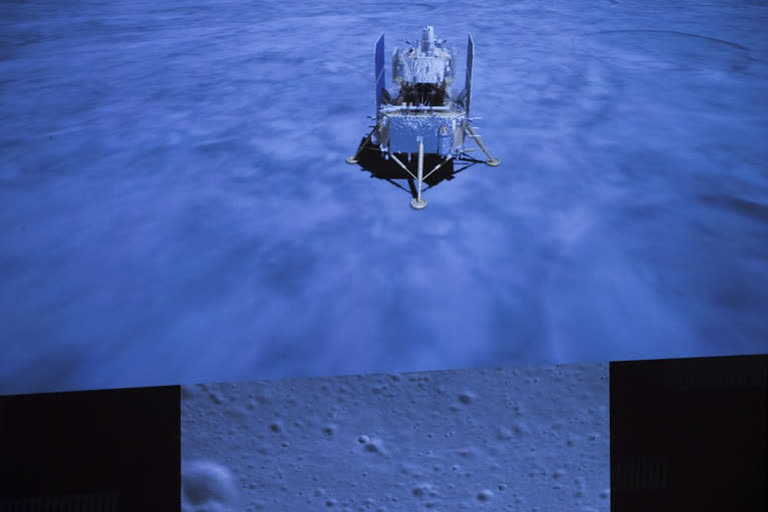Beijing (China): A Chinese lunar capsule returned to Earth Thursday with the first fresh samples of rock and debris from the moon in more than 40 years.
The capsule of the Chang'e 5 probe landed in the Siziwang district of the Inner Mongolia region, state media reported shortly after 2:00 am (1800 GMT).
The capsule earlier separated from its orbiter module and performed a bounce off the Earth's atmosphere to reduce its speed before passing through and floating to the ground on parachutes.
Two of the Chang'e 5's four modules set down on the moon on December 1 and collected about 2 kilograms (4.4 pounds) of samples by scooping them from the surface and by drilling 2 meters (about 6 feet) into the moon's crust.
The samples were deposited in a sealed container that was carried back to the return module by an ascent vehicle.
The successful mission was the latest breakthrough for China's increasingly ambitious space program that includes a robotic mission to Mars and plans for a permanent orbiting space station.
Recovery crews had prepared helicopters and off-road vehicles to home-in on signals emitted by the lunar spacecraft to locate it in the darkness shrouding the vast snow-covered region in China's far north, long been used as a landing site for China's Shenzhou crewed spaceships.
The spacecraft's return marked the first time scientists have obtained fresh samples of lunar rocks since the former Soviet Union's Luna 24 robot probe in 1976.
Those rocks and debris are thought to be billions of years younger than those obtained by the US and former Soviet Union, offering new insights into the history of the moon and other bodies in the solar system.
They come from a part of the moon known as the Oceanus Procellarum, or Ocean of Storms, near a site called the Mons Rumker that was believed to have been volcanic in ancient times.
As with the 382 kilograms (842 pounds) of lunar samples brought back by US astronauts from 1969 to 1972, they will be analyzed for age and composition and likely shared with other countries.
